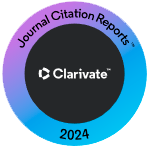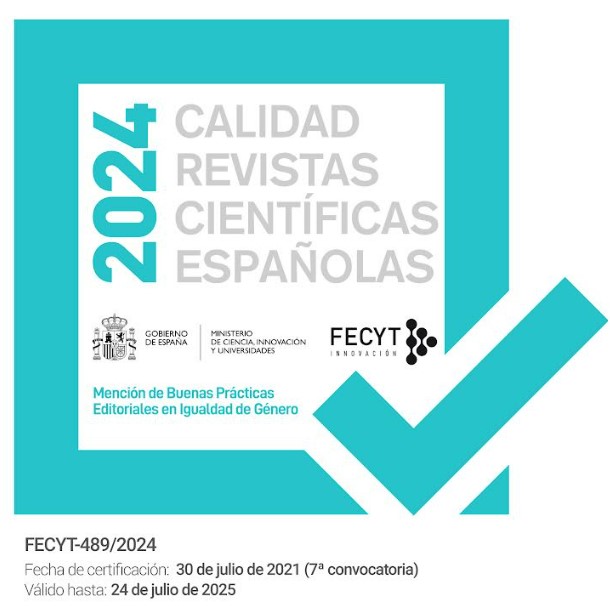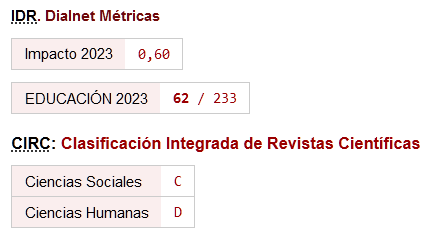Factors influencing online learning of university students under the covid-19 pandemic
DOI:
https://doi.org/10.46661/ijeri.5432Keywords:
Online learning, Pakistan, Structural Equation Modeling, educationAbstract
Online learning systems owing to their nature are free of restrictions of time or place and can prove to be a useful platform for students where they can continue their studies when it is not possible for them to go to a university in person owing to different reasons. Such systems have also been used in Pakistan, particularly in private sector, for university and school education. This paper attempts to highlight various issues that the students are facing and the factors that have a significant effect on their online learning experience. We collected data through online questionnaires distributed to 1200 students enrolled in six private universities in Pakistan. This study employed the Structure Equation Modelling (SEM) to examine factors that influenced online learning. The results showed that teaching and professional behaviour, course instructional planning and methodology and online connectivity were significantly positively associated with online learning. With the identification of key factors that affects online learning of students, it will be more helpful to provide improved services for effective student leaning. Other crucial implications and a way forward are also discussed in the paper.
Downloads
References
Abdelmeneim, A., Said, F., Hassan, N., & Malek, K. (2000). Training teachers at a distance on using technology in class. World-bank and Ministry of Education. Cairo: Dar El-Tyseer. (in Arabic).
Abu-Al-Aish, A. (2014). Toward mobile learning deployment in higher education. Doctoral dissertation, Brunel University, School of Information Systems, Computing and Mathematics.
Al-Samarraie, H., Teng, B. K., Alzahrani, A. I., & Alalwan, N. (2018). Online learning continuance satisfaction in higher education: a unified perspective from instructors and students. Studies in Higher Education, 43(11), 2003-2019.
Álvarez, I., Guasch, T., & Espasa, A. (2009). University teacher roles and competencies in online learning environments: a theoretical analysis of teaching and learning practices. European Journal of Teacher Education, 32(3), 321-336.
Anderson, J. C., & Gerbing, D. W. (1988). Structural equation modeling in practice: A review and recommended two-step approach. Psychological Bulletin, 103(3), 411-423.
Ashill, N. J., & Jobber, D. (2010). Measuring State, Effect, and Response Uncertainty: Theoretical Construct Development and Empirical Validation. Journal of Management, 36(5), 1278-1308.
Baker, C. (2010). The impact of instructor immediacy and presence for online student affective learning, cognition, and motivation. Journal of Educators Online, 7(1), 1.
Barclay, D., Higgins, C., & Thompson, R. (1995). The partial least squares (PLS) approach to casual modeling: personal computer adoption and use as an Illustration.
Bennet, S., Priest, A., & Macpherson, C. (1999). Learning about online learning: An approach to staff development for university teachers. Australian Journal of Educational Technology, 15, 207-221.
Bielawski, L., & Metcalf, D. (2005). Blended online learning: Integrating knowledge, performance, support, and online learning (2nd ed.). United States: HRD Press.
Bryceson, K. (2001). Thoughts of a first-time online course developer: Issues and resolutions. Teaching & Education News, 11(1). Retrieved from: http://www.tedi.uq.edu.au/TEN
Cheah, J.-H., Sarstedt, M., Ringle, C.M., Ramayah, T. and Ting, H. (2018), "Convergent validity assessment of formatively measured constructs in PLS-SEM: On using single-item versus multi-item measures in redundancy analyses". International Journal of Contemporary Hospitality Management, 30 (11), 3192-3210.
Chen, H. R., & Tseng, H. F. (2012). Factors that influence acceptance of online online learning systems for the in-service education of junior high school teachers in Taiwan. Evaluation and Program Planning, 35(3), 398-406.
Chen, Y. C., Wu, J. H., Peng, L., & Yeh, R. C. (2015). Consumer benefit creation in online group buying: The social capital and platform synergy effect and the mediating role of participation. Electronic Commerce Research and Applications, 14(6), 499-513.
Chin, W. W. (1998). The partial least squares approach to structural equation modeling. Modern methods for business research, 295(2), 295-336.
Crawford, J., Butler-Henderson, K., Rudolph, J., & Glowatz, M. (2020). COVID-19: 20 Countries' Higher Education Intra-Period Digital Pedagogy Responses. Journal of Applied Teaching and Learning (JALT), 3(1), 9-28.
Detlev N. (2016). Wissensmedien und die vermittlung zwischen externer und interner repräsenration, in: Knowledge und media design. Oldenbourg Verlag, Rosenheimer str. 145, D-8 167 1 München.
Dreheeb, A. E., Basir, N., & Fabil, N. (2016). Comparative Study of Quality Models. International Journal of Computer Science and Electronics Engineering (IJCSEE), 4(1), 35-39.
EC [European Commission]. (2001). Communication from the commission to the council and the European parliament: the online learning action plan, Brussels, 28.3.
Falk, R. F., & Miller, N. B. (1992). A primer for soft modeling. University of Akron Press.
Fisher, C. W., Berliner, D. C., Filby, N. N., Marliave, R., Cahen, L. S., & Dishaw, M. M. (1981). Teaching behaviors, academic learning time, and student achievement: An overview. The Journal of classroom interaction, 17(1), 2-15.
Fornell, C., & Bookstein, F. L. (1982). Two structural equation models: LISREL and PLS applied to consumer exit-voice theory. Journal of Marketing Research, 19(4), 440-452.
Freeze, R. D., Alshare, K. A., Lane, P. L., & Wen, H. J. (2019). IS success model in online learning context based on students' perceptions. Journal of Information Systems Education, 21(2), 4.
Fregonese, C., Caputo, A., & Langher, V. (2018). Work symbolic motive scale: development and validation of a measure of affective investment at work. International Journal of Work Organisation and Emotion, 9(4), 322-347.
Gartmeier, M., Bauer, J., Fischer, M. R., Hoppe-Seyler, T., Karsten, G., Kiessling, C. & Prenzel, M. (2015). Fostering professional communication skills of future physicians and teachers: effects of online learning with video cases and role-play. Instructional Science, 43(4), 443-462.
Gell-Mann, M. (1996). A commentary to R Schank. in J. Brockman (Ed.), The third culture: beyond the scientific revolution. New York: Touchtone Books, 167-180.
Goodman, J., Melkers, J., & Pallais, A. (2019). Can online delivery increase access to education? Journal of Labor Economics, 37(1), 1-34.
Graf, S., & Kinshuk, T.-C. L. (2010). Analysis of learners’ navigational behaviour and their learning styles in an online course. Journal of Computer Assisted Learning, 26(2), 116-131.
Hasnat, F. (2009) Developing an online learning environment for CSE-110 at BRAC University. A Thesis Report. Department of Computer Science and Engineering, BRAC University.
Hayashi, A., Chen, C., Ryan, T., & Wu, J. (2020). The role of social presence and moderating role of computer self-efficacy in predicting the continuance usage of online learning systems. Journal of Information Systems Education, 15(2), 5.
Jacobsen, W. C., & Forste, R. (2011). The wired generation: Academic and social outcomes of electronic media use among university students. Cyberpsychology, Behavior, and Social Networking, 14(5), 275-280.
Joo, Y. J., Lee, H.W., & Ham, Y. (2014). Integrating user interface and personal innovativeness into the TAM for mobile learning in Cyber University. Journal of Computing in Higher Education, 26(2), 143–158.
Kung, Y. L. (2019). An online learning system for introduction to information and communication technology.
Lawler, J., Joseph, A., & Yegnaseshan, A. (2020). An Analysis of Course Impacts from a Design Factory Methodology. In Proceedings of the EDSIG Conference (Vol. 2473, p. 4901).
Lepp, A., Barkley, J. E., & Karpinski, A. C. (2014). The relationship between cell phone use, academic performance, anxiety, and satisfaction with life in college students. Computers in Human Behavior, 31, 343-350.
Liguori, E., & Winkler, C. (2020). From Offline to Online: Challenges and opportunities for entrepreneurship education following the COVID-19 pandemic. Entrepreneurship Education and Pedagogy, 3(4), 346-351.
Loayza, N. V., & Pennings, S. (2020). Macroeconomic policy in the time of covid-19: A primer for developing countries. Research and Policy Briefs, 28.
Loyalka, P., Popova, A., Li, G., & Shi, Z. (2019). Does teacher training actually work? Evidence from a large-scale randomized evaluation of a national teacher training program. American Economic Journal: Applied Economics, 11(3), 128-54.
Lu, H., Stratton, C. W., & Tang, Y. W. (2020). The Wuhan SARS‐CoV‐2—What's next for China. Journal of Medical Virology, 92(6), 546-547.
Martins, L., & Kellermanns, F. (2004). A model of business school students’ acceptance of a Online course management system. Academy of Management Learning & Education, 3(1), 7-26.
Masrom, M., Zainon, O., & Rahiman, R. (2008). Critical success in online learning: An examination of technological and institutional support factors. Retrieved from: https://www.researchgate.net/publication/228410786_Critical_Success_in_Elearning_An_Examination_of_Technological_and_Institutional_Support_Factors
Matias-Reche, F., Garcia-Morales, V. J., & Rueda-Manzanares, A. (2008). Entrepreneurial size, complexity and decentralization of decision-making in the use of temporary help workers in Spain. The International Journal of Human Resource Management, 19(1), 169–187.
McKibbin, W. J., & Fernando, R. (2020). The global macroeconomic impacts of COVID-19: Seven scenarios. Retrieved form: https://www.brookings.edu/research/the-global-macroeconomic-impacts-of-covid-19-seven-scenarios/
McMahon, M. (1997, December). Social constructivism and the world wide web—A paradigm for learning. Paper presented at the annual meeting of the Australasian society for computers in learning in tertiary education (ASCILITE), Perth, Australia. Retrieved from: http://www.ascilite.org.au/conferences/perth97/papers/Mcmahon/Mcmahon.html
Muijs, D., Kyriakides, L., Van der Werf, G., Creemers, B., Timperley, H., & Earl, L. (2014). State of the art–teacher effectiveness and professional learning. School effectiveness and school improvement, 25(2), 231-256.
Neo, K. T. K., & Neo, M. (2001). A constructivist learning experience: Reconstructing a web site using online multimedia authoring tools. Australian Journal of Educational Technology, 17(3), 330–350.
Noesgaard, S. S., & Ørngreen, R. (2015). The Effectiveness of Online learning: An Explorative and Integrative Review of the Definitions, Methodologies and Factors that Promote online learning Effectiveness. Electronic Journal of Online learning, 13(4), 278-290.
Nunnally, J. C., & Bernstein, I. H. (1994). Validity. Psychometric Theory, 3, 99-132.
Pear, J. J., & Crone-Todd, D. E. (2002). A social constructivist approach to computer-mediated instruction. Computers and Education, 38, 221–231.
Pham, L., Limbu, Y. B., Bui, T. K., Nguyen, H. T., & Pham, H. T. (2019). Does online learning service quality influence online learning student satisfaction and loyalty? Evidence from Vietnam. International Journal of Educational Technology in Higher Education, 16(1), 7.
Poulou, M. S. (2020). Students’ adjustment at school: The role of teachers’ need satisfaction, teacher–student relationships and student well-being. School Psychology International, 0143034320951911.
Rashid, T., & Asghar, H. M. (2016). Technology use, self-directed learning, student engagement and academic performance: Examining the interrelations. Computers in Human Behavior, 63, 604-612.
Ring, G., & McMahon, M. (1997, December). Web instruction: Searching for a theoretical basis. Paper presented at the international conference on computers in education (ICCE97), Kuching, Malaysia.
Roky, H., & Al Meriouh, Y. (2015). Evaluation by users of an industrial information system (XPPS) based on the DeLone and McLean model for IS success. Procedia Economics and Finance, 26, 903-913.
Ruey-Shun, Hsiang, C. H. (2007) A study on the critical success factors for corporations embarking on knowledge community-based online learning. Information Sciences, 177 (2), 570–586.
Siddiqui, M. U. A., Saeed, H., & Farid, S. (2019). Online Support Services in Online learning: A Technology Acceptance Model. Sukkur IBA Journal of Computing and Mathematical Sciences, 2(2), 22-29.
Stash, N. (2007). Incorporating Cognitive/Learning Styles in a General-Purpose Adaptive Hypermedia System. Ph.D. dissertation, Eindhoven: Technische Universiteit, Eindhoven, Netherlands.
Storey, C., & Kahn, K. B. (2010). The role of knowledge management strategies and task knowledge in stimulating service innovation. Journal of Service Research, 13(4), 397-410.
Torres-Gordillo, J. J., Melero-Aguilar, N., & García-Jiménez, J. (2020). Improving the university teaching-learning process with ECO methodology: Teachers’ perceptions. PloS one, 15(8), e0237712.
Torrisi-Steele, G. (2002, July). Technology for the sake of learning—A planning approach for integrating new technologies in tertiary learning environments. In Proceedings of AusWeb02 The Eighth Australian World Wide Web Conference.
Ukpokodu, O. N. (2020). Marginalization of Social Studies Teacher Preparation for Global Competence and Global Perspectives Pedagogy: A Call for Change. Journal of International Social Studies, 10(1), 3-34.
Vohra, M. H. (2013). Online learning in Pakistan. Retrieved from: http://www.hamariweb.com/articles/article.aspx?id=32766
Wang, D., Hu, B., Hu, C., Zhu, F., Liu, X., Zhang, J., & Zhao, et al. (2020). Clinical characteristics of 138 hospitalized patients with 2019 novel coronavirus–infected pneumonia in Wuhan, China. Jama, 323(11), 1061-1069.
Wang, W. T., & Wang, C. C. (2009). An empirical study of instructor adoption of online learning systems. Computers & Education, 53(3), 761-774.
Wentworth, D. K., & Middleton, J. H. (2014). Technology use and academic performance. Computers & Education, 78, 306-311.
Willems, J., Farley, H., & Campbell, C. (2019). The increasing significance of digital equity in higher education. Australasian Journal of Educational Technology, 35(6), 1-8.
Williams, L. J., & Hazer, J. T. (1986). Antecedents and consequences of satisfaction and commitment in turnover models: A reanalysis using latent variable structural equation methods. Journal of Applied Psychology, 71(2), 219–231. https://doi.org/10.1037/0021-9010.71.2.219
Wu, J., Zhang, S. (2010). Broadband multimedia online learning system using web service. Retrieved from: https://www.cn.apan.net/cairns/NRW/06-Wu%20Jie.pdf
Zhang, X. (2020, March). Thoughts on Large-Scale Long-Distance Online Teaching in Colleges and Universities Under Novel Coronavirus Pneumonia Epidemic: A Case of Chengdu University. In 4th International Conference on Culture, Education and Economic Development of Modern Society (ICCESE 2020) (pp. 1222-1225). Atlantis Press.
Downloads
Published
How to Cite
Issue
Section
License
Copyright (c) 2020 Dr. Faisal Mustafa, Ambreen Khursheed, Syed Muhammad Usama Rizvi, Ahsan Zahid, Ayesha Akhtar

This work is licensed under a Creative Commons Attribution-NonCommercial-NoDerivatives 4.0 International License.












